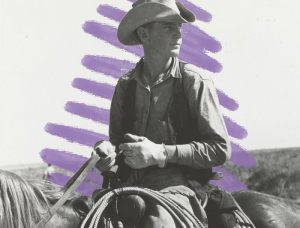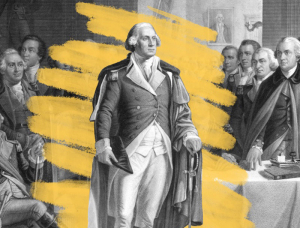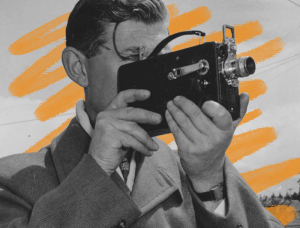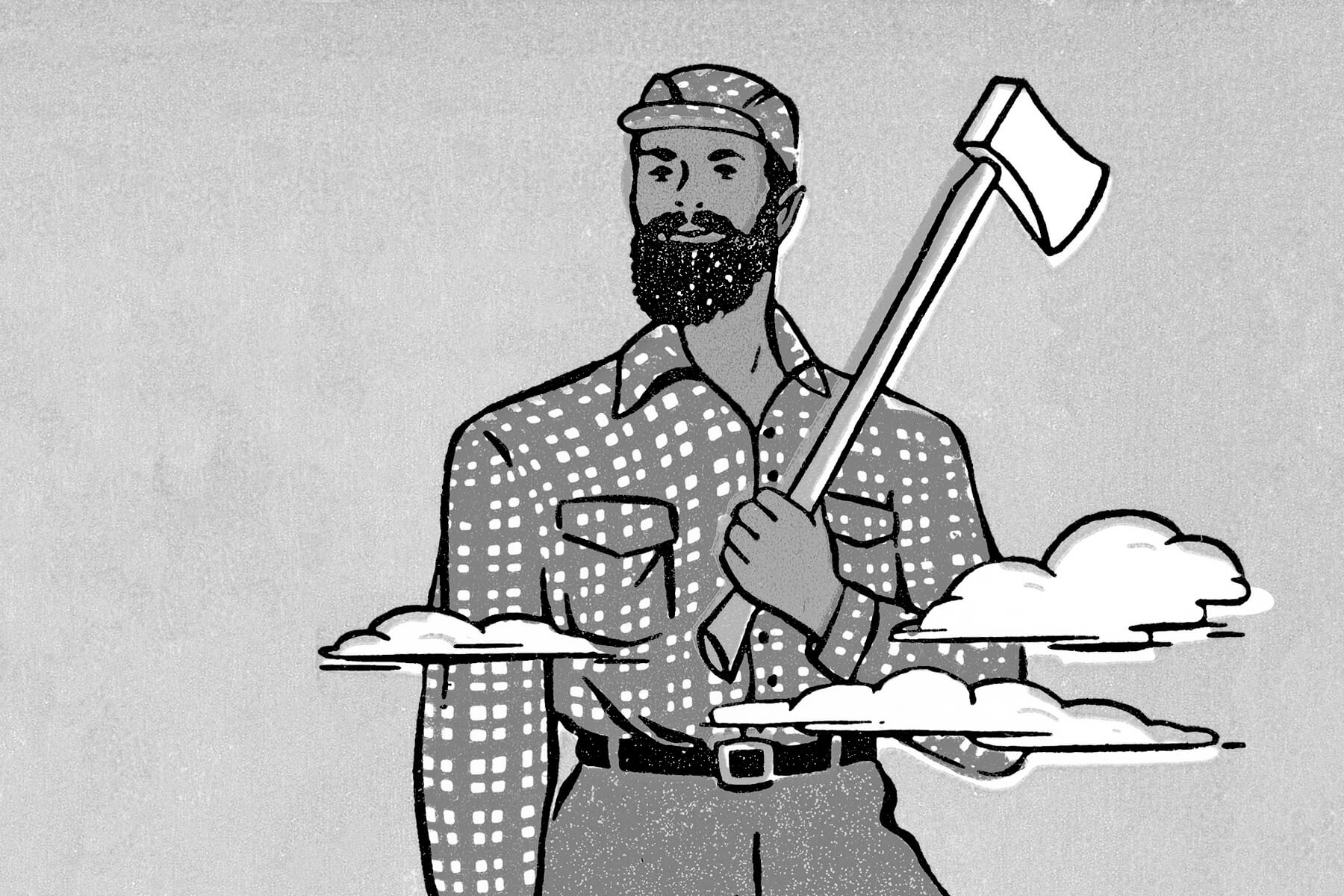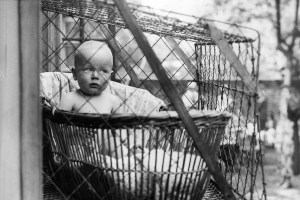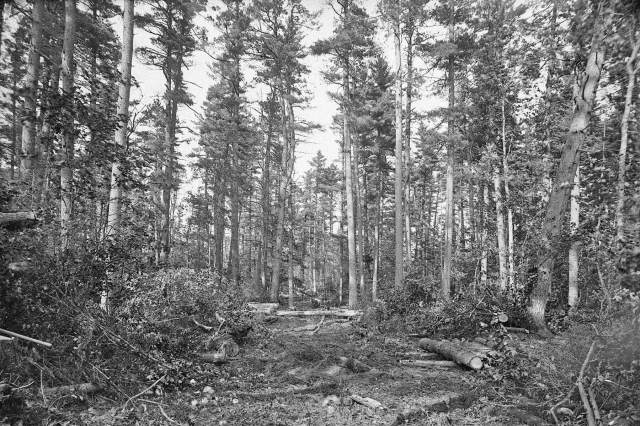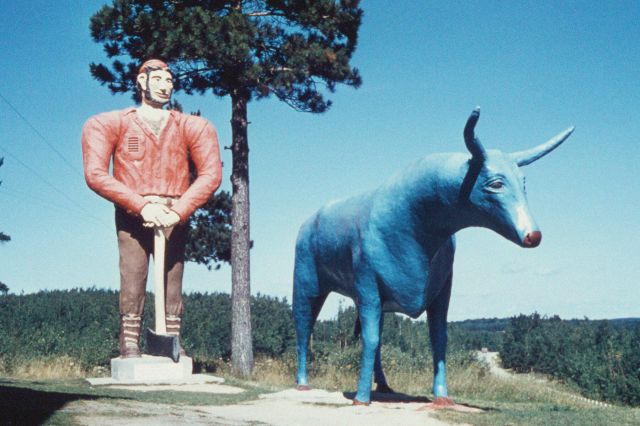Was Paul Bunyan Real?
Even in this age of internet-inspired distractions, Paul Bunyan remains a well-known figure in the pantheon of American icons. It’s easy to see why when considering his portfolio. A hardworking lumberjack, Bunyan cleared entire forests with a single stroke of his ax; created natural formations such as the Grand Canyon with his sheer size and strength; and was even kind to animals, as illustrated by his longtime companionship with Babe the Blue Ox. No fewer than six towns lay claim to being his birthplace, while others boast a variety of Bunyan statues, restaurants, and events.
Of course, part of the attraction to this legendary figure stems from the exaggerations inherent to the tall-tale tradition. We know there wasn’t really a human so massive he needed to be carried by five storks as a baby and created entire lakes when his footsteps filled with water. On the other hand, it’s often pointed out that truth is stranger than fiction, so perhaps there was a real-life lumberjack so unusually strong and brave that he inspired the character who grew to such outlandish proportions in the stories that followed. Peering back through the legend’s many branches, here’s a look at where and when this larger-than-life woodsman first marked his presence.
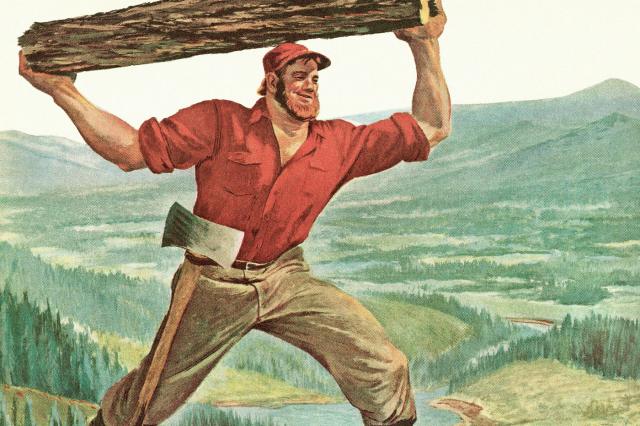
The Possible Real-Life Inspiration for Bunyan
One candidate for the real-life Bunyan was a French Canadian logger by the name of Fabian “Saginaw Joe” Fournier. A large man who supposedly sported two full sets of adult teeth, Fournier was known for his shows of strength and hard-drinking ways, until he was killed in the rough-and-tumble logging town of Bay City, Michigan, in 1875.
The other main hypothesized model for the tall-tale icon was a French Canadian lumberman named Bon Jean, an alleged participant in Lower Canada’s Papineau Rebellion of 1837. Bon Jean’s formidable reputation spread across the border by way of his countrymen who sought work in the Great Lakes region, and, the theory goes, his Québécois moniker was eventually Americanized to “Bunyan.”
However, according to Michael Edmonds, author of Out of the Northwoods: The Many Lives of Paul Bunyan, there are problems with both of these origin stories. The source of the Fournier theory was a logger-turned-writer named James MacGillivray, who published some of the earliest newspaper stories about Bunyan in the early 20th century. But his own source proved to be dubious. Decades later, MacGillivray wrote in a letter how he’d learned of the Fournier connection from a timber cruiser (land appraiser) named Jimmy Conn. However, that contradicted an earlier account of MacGillivray’s in which he claimed to have heard of Fournier back in 1887, a time when Conn was just a teenager and too young to hold such an advanced position.
Edmonds traces the Papineau Rebellion theory, meanwhile, to author James Stevens, who relayed the anecdotes of a French Canadian old-timer for his popular 1925 book about Bunyan. Over the years, the identity of this participant in the uprising was fused with that of a French Canadian folk character named Bon Jean. However, researchers who combed the archives of information related to the rebellion found no mention of a Bunyan or anyone with a similar name.
It’s quite possible that a logger with bulging muscles and nerves of steel made his way into the first Bunyan tales by hauling a massive white pine trunk or overpowering a vicious beast of the north woods. However, the identity of such an individual — or individuals — was unknown when researchers first began digging for him more than a century ago, and it remains unknown today with the original sources long gone.
